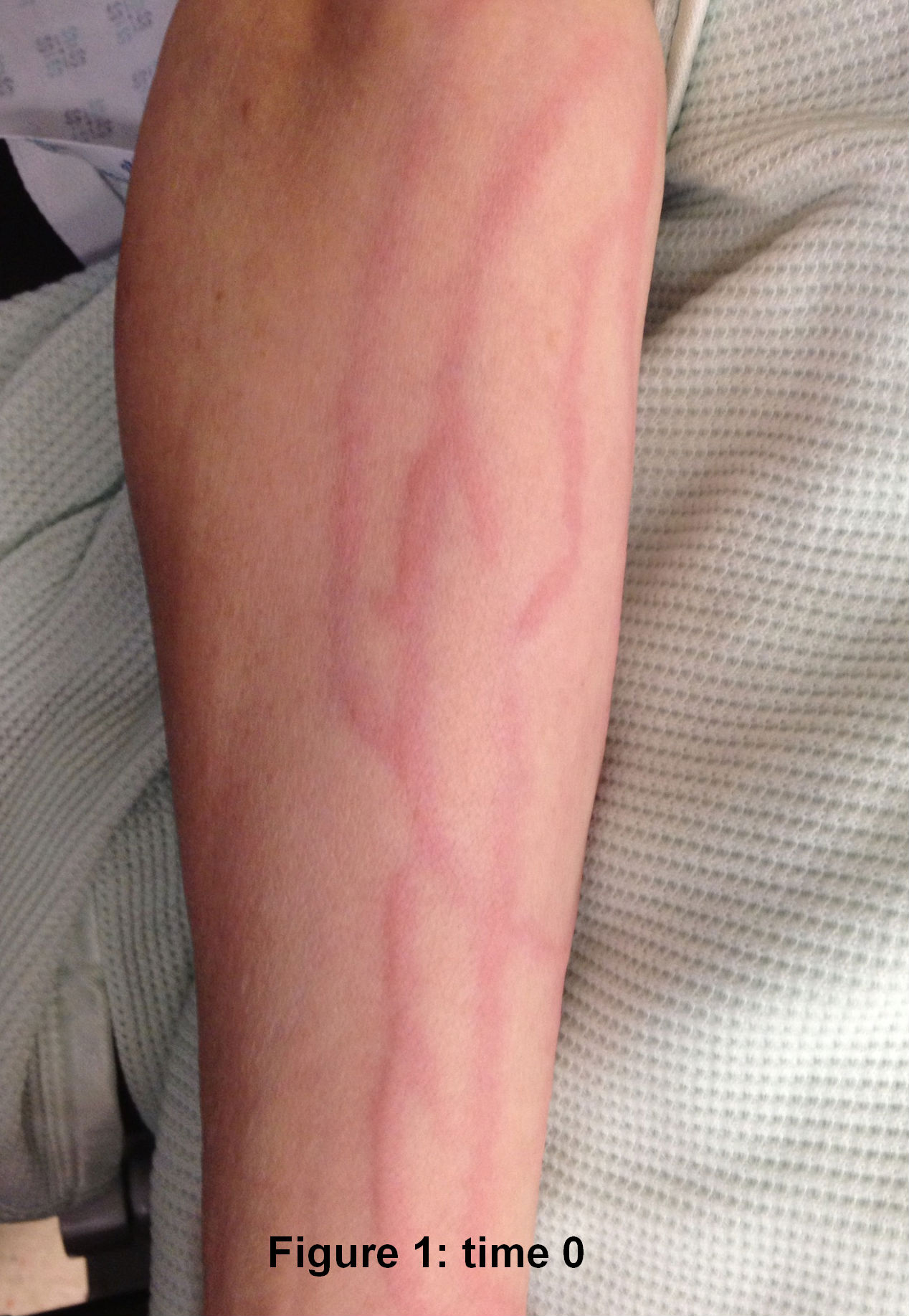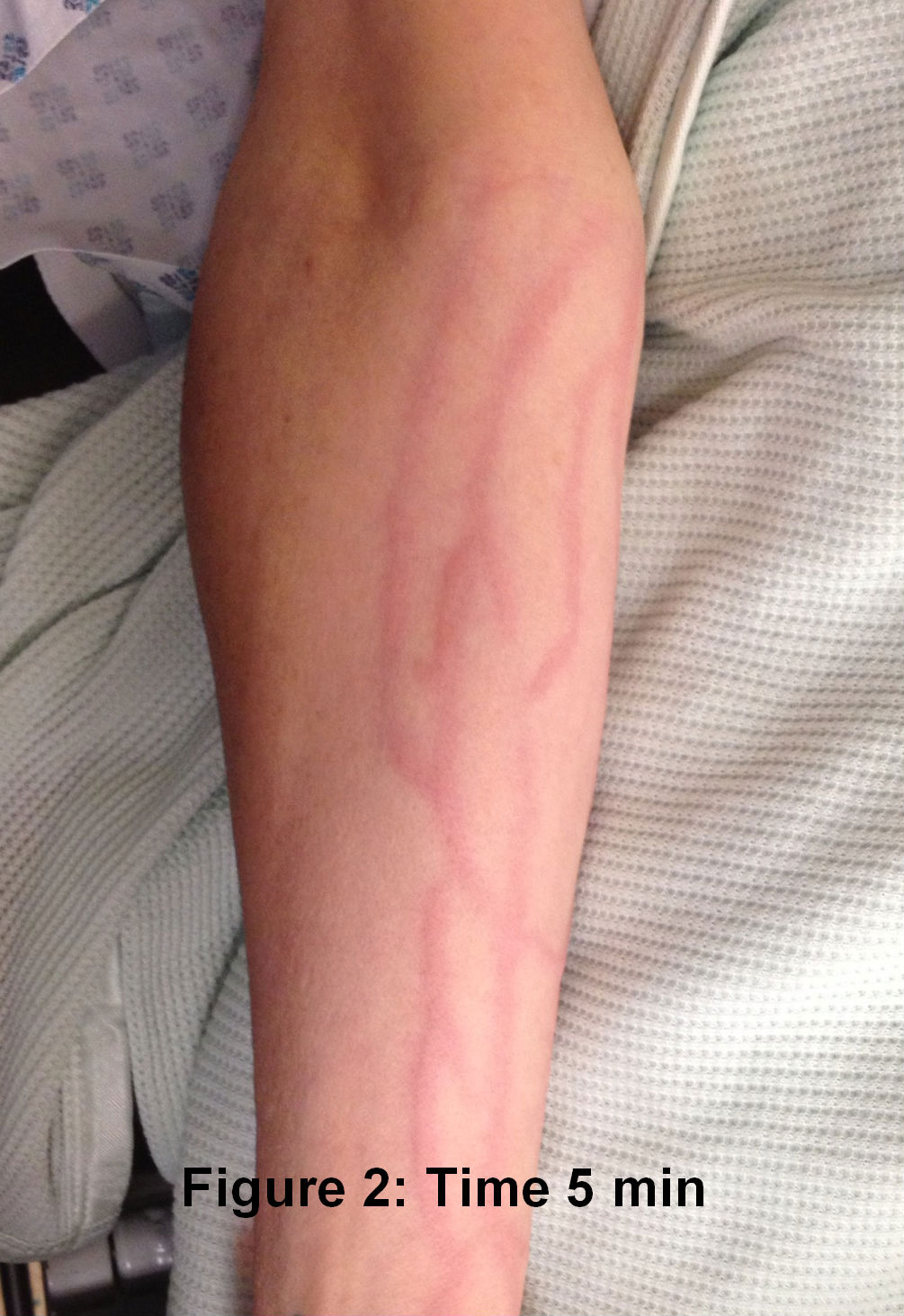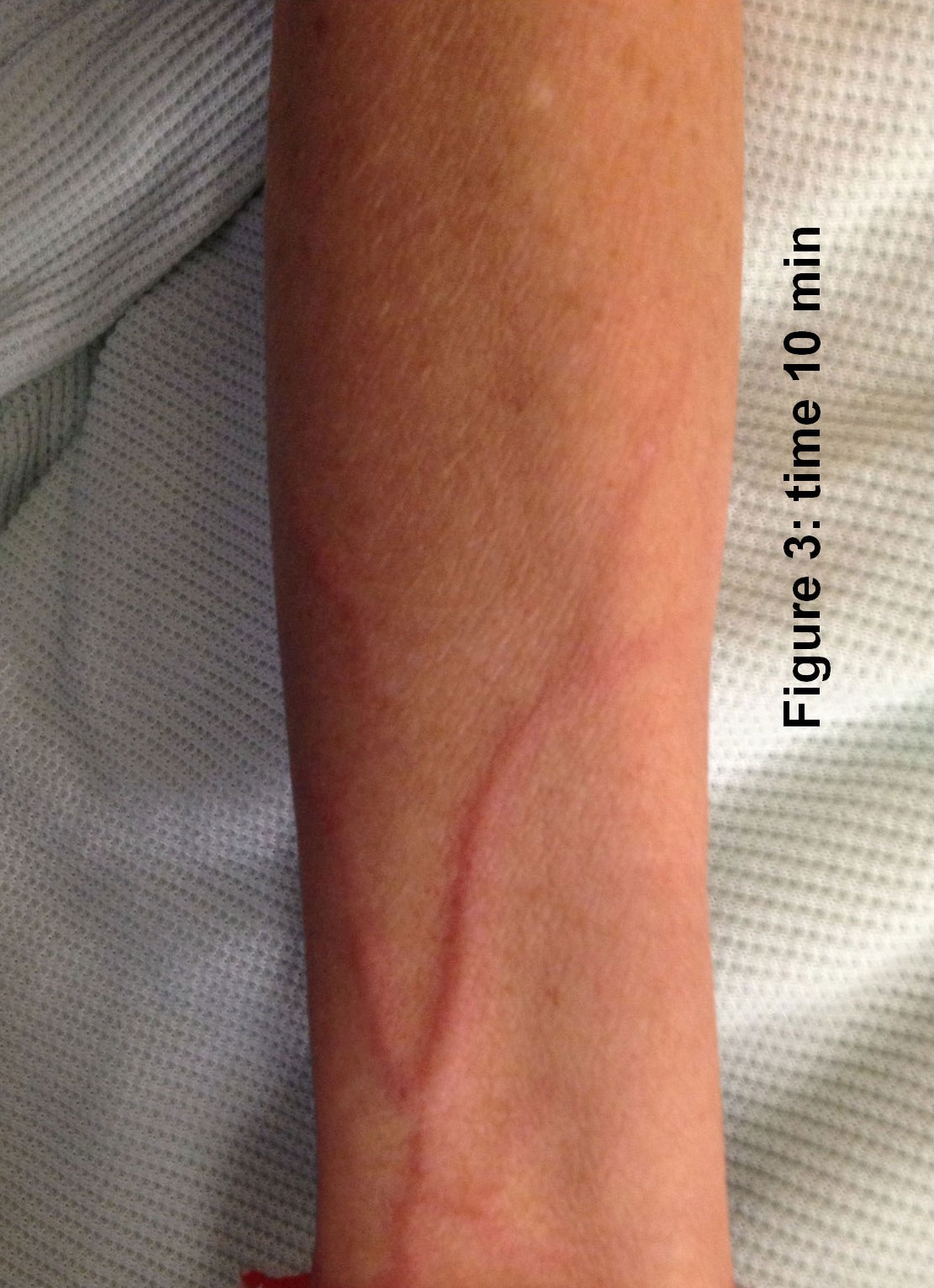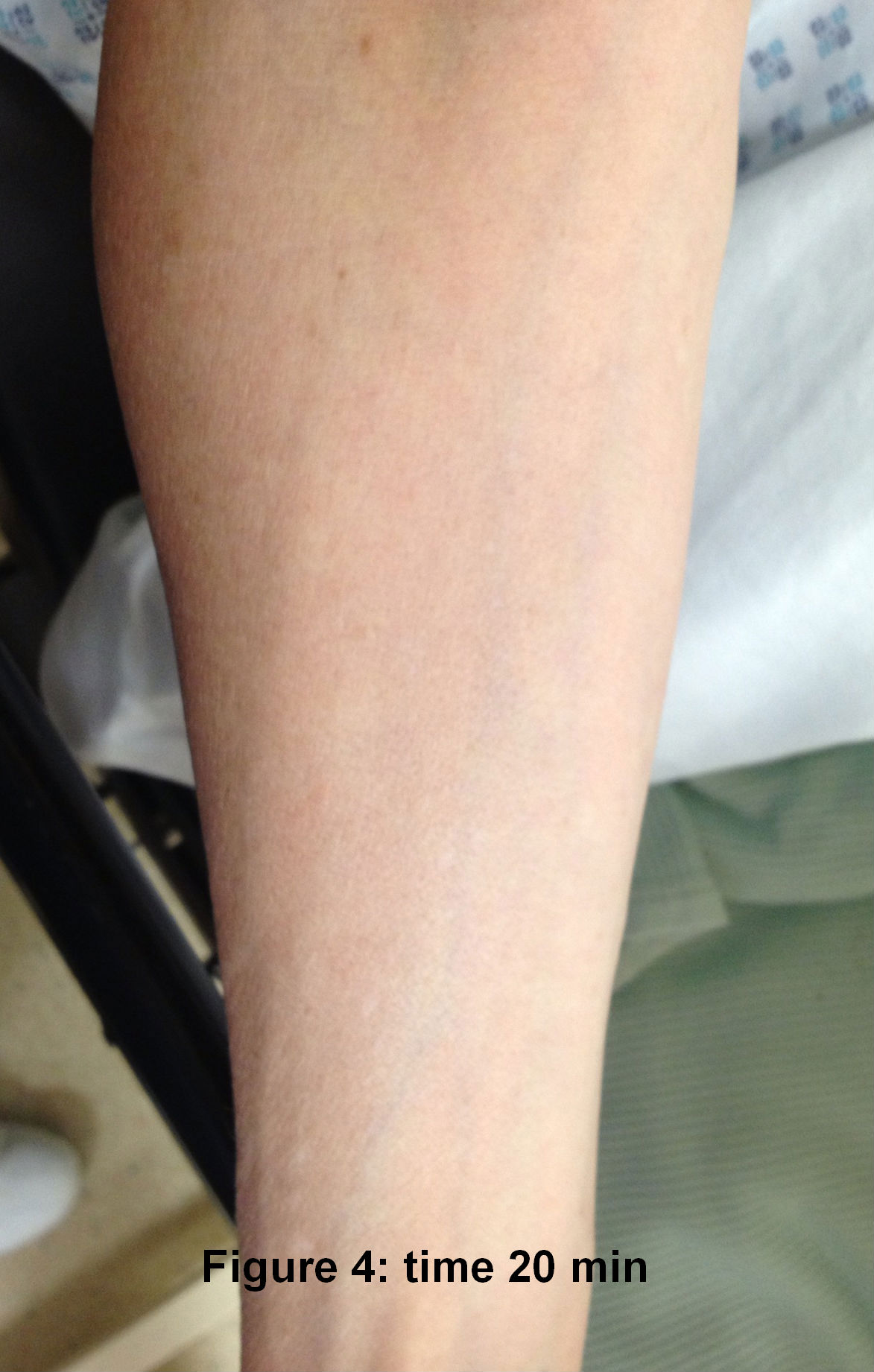An unusual reaction to IV pethidine - A Case Report
Prakash Krishnan and Asquad Sultan
Cite this article as: BJMP 2014;7(1):a707
|
|
Abstract Pethidine is used in some centres for post operative rescue analgaesia, among other indications. We report an unusual and dramatic side effect from IV pethidine administration and its implications. Keywords: Pethidine, Intravenous, Histamine, Adverse effect, Side effectAbbreviations: ECG- electrocardiogram, BMI- body mass index, SSRI- selective serotonin reuptake inhibitors, MAO inhibitors- monoamine oxidase inhibitors, IV- intravenous, ASA- American Society of Anesthesiologists. |
Case
A 41 year old female patient (ASA II) underwent an incision and drainage of her perianal abscess under a general anaesthetic as an urgent procedure. She was known to have anorexia nervosa and was under medical management for it. She had a BMI of 18.5. She also suffered from eczema and mild asthma. She gave a history of irregular heart rhythm in the past. She had a normal ECG and echocardiogram. She was on fluoxetine, salbutamol inhaler, beclometasone inhaler and ricatriptan. She had normal blood investigations prior to induction.
Her anaesthetic was induced with propofol and fentanyl and was maintained on oxygen/ air/ sevoflurane. She was on spontaneous ventilation through a laryngeal mask. She also received paracetamol and ondansetron intraoperatively. She was haemodynamically stable during the twenty minute procedure, which was done in the lateral position.
The laryngeal mask came out ten minutes after her arrival in recovery. The patient asked for pain relief ten minutes after waking up. IV pethidine 25mg (diluted to 12.5 mg/ml) was given by the recovery nurse who, within five minutes, noted severe redness in the distribution of the vein into which it was injected (Figure 1). The anaesthetist was notified, who then flushed the IV line with normal saline. The redness settled down within 15-20 minutes of the start of the reaction ( Figure 2 to 4). The patient was haemodynamically stable and didn't complain of any local or systemic symptoms.
Discussion
Pethidine has been known to release histamine on systemic administration1. It can also have interactions with various drug groups like SSRIs and MAO inhibitors to cause serotonin syndrome2,3 and can present with tachycardia, hypertension, hyperthermia, agitation and even seizures, among other signs and symptoms. Pethidine is equipotent to morphine and codeine in terms of histamine release 4.
This case is most likely due to profound histamine release in a patient with atopic tendency. The factors thought to increase the incidence and severity of this reaction are 5:
- Old age
- Thin body structure
- Poor peripheral circulation
- Volar > dorsal veins
- Repeated injection into the same superficial vein
- High concentration of solution of injection (>10 mg/ml solution)
The factors that have no influence are:
- Pretreatment with an antihistamine
- History of previous pethidine use
- Using pethidine as a premedication
In the past, diluting pethidine with 0.25% procaine also provided protection against the reaction.
There were no other signs of serotonin excess in this patient and she came to no harm. The presentation was dramatic enough to cause concern but was self-limiting.

Figure 1: Time - 0

Figure 2: Time - 5 min

Figure 3: Time - 10 min

Figure 4: Time - 20 min
|
Acknowledgements Chantelle Burley, Recovery nurse, Kettering General Hospital for her help in gathering information regarding this case. Competing Interests None declared Author Details PRAKASH KRISHNAN, FRCA, MD, Department of Anaesthetics And Critical Care, Kettering General Hospital, UK. ASQUAD SULTAN, FFARCSI, EDRA, Department of Anaesthetics And Critical Care, Kettering General Hospital, UK. CORRESPONDENCE: PRAKASH KRISHNAN, Department of Anaesthetics And Critical Care, Kettering General Hospital, NN16 8UZ, UK. Email: drprakash.krishnan.nhs@gmail.com |
References
- Schachter M-The release of histamine by pethidine, atropine, quinine, and other drugs - Br J Pharmacol Chemother. 1952 December; 7(4): 646–654.
- BNF, Novemeber 2013
- Gillman P. K.- Monoamine oxidase inhibitors, opioid analgesics and serotonin toxicity- British Journal of Anaesthesia 95 (4): 434–41 (2005)
- Grosman N - Histamine release from isolated rat mast cells: effect of morphine and related drugs and their interaction with compound 48/80- Agents Actions. 1981 May;11(3):196-203
- Argent DE, Dinnick OP- Pethidine phlebitis- Br Journal of Anaesthesia (1954) 26, 260

The above article is licensed under a Creative Commons Attribution-NonCommercial-NoDerivatives 4.0 International License.




